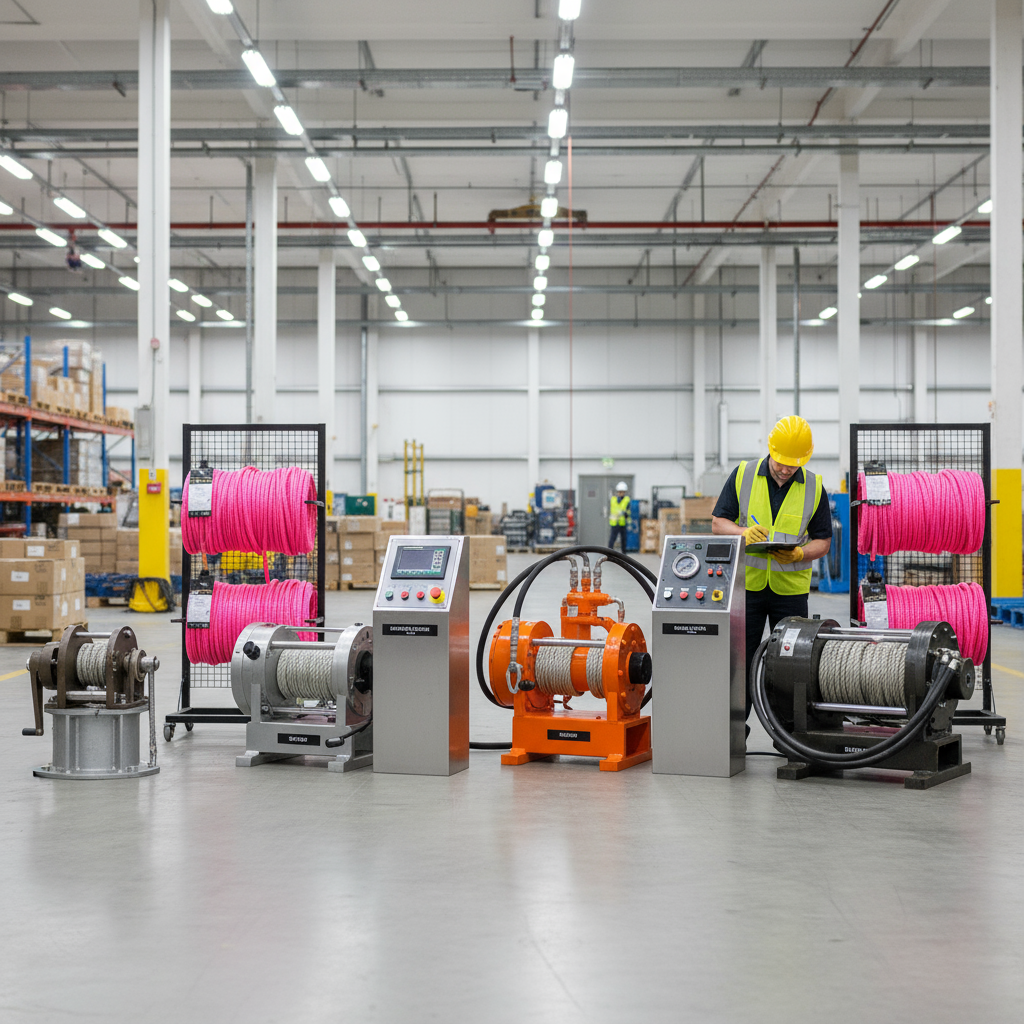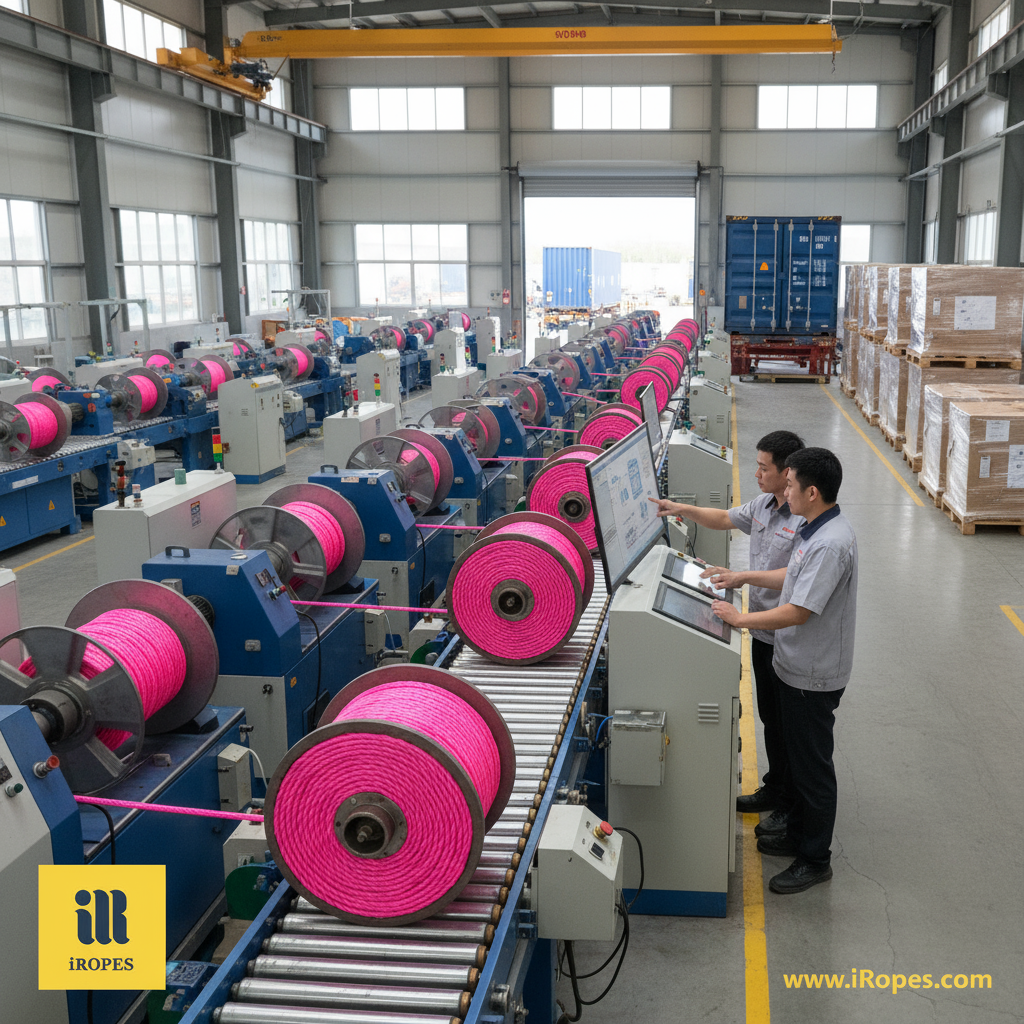Fibre rope winch machines deliver up to 2.73× higher breaking strength and are 17.9 % lighter than steel alternatives, while staying fully waterproof and UV‑resistant.
≈2‑minute read – Core Benefits
- ✓ Up to 2.73× breaking strength for safer lifts
- ✓ 17.9 % weight reduction cuts handling costs
- ✓ Waterproof & UV‑resistant ensures year‑round reliability
- ✓ Custom OEM/ODM options align with your branding and load specs
Most factories still equip their winches with bulky steel cables, often assuming that heavier equates to stronger. However, this approach carries a hidden cost: wasted energy and premature fatigue. Consider switching to a fibre‑rope winch machine. These machines are engineered to lift 1.9 tonnes with 23% less weight, offer 12% faster retraction, and feature built‑in UV‑proofing. This transition will significantly reduce maintenance hours while boosting safety, delivering an immediate return on investment for your operations from the very first shift.
Understanding Rope Machines and Their Industrial Role
After exploring the growing importance of fibre‑rope winches, it is essential to look at the origin of these high-performance ropes: the rope machine. This equipment forms the backbone of the supply chain, creating the very strands you rely on. A modern rope machine efficiently converts raw fibre into the high‑strength rope crucial for construction sites, marine vessels, and many other heavy‑duty industrial applications.

Simply put, a rope machine functions as a production line that twists, strands, and coils fibre to create a continuous length of rope. Its primary function is to maintain precise tension and alignment, ensuring each strand contributes evenly to the final breaking strength. Advanced models are fully automated, enabling manufacturers to meet exact specifications with minimal waste.
- Pay‑off bobbin – Feeds the raw yarn at a controlled rate, ensuring consistent strand length and tension.
- Flyer arm – Guides the individual strands into the desired lay pattern, which is crucial for achieving specific torque resistance and strength.
- Coiling system – Gathers the finished rope onto a drum or package, preparing it for subsequent processing or direct shipment.
So, what is a rope making machine used for? Fundamentally, it transforms raw materials—be it polyester, aramid, or HMPE fibre—into durable rope capable of lifting, towing, or securing loads reliably. Manufacturers employ these advanced machines to produce everything from thin climbing lines to massive offshore towing ropes. They meticulously tailor diameter, strand count, and core type to meet the diverse demands of each industry.
“A well‑engineered rope machine is the silent workhorse behind every reliable lifting solution; without it, the safety margins we count on simply wouldn’t exist.” – Senior Production Engineer, iRopes
Understanding these foundational principles highlights why partnering with a reputable **rope machine manufacturers** is crucial. When equipment precisely controls strand tension, it produces ropes that deliver the advertised breaking strength while remaining lightweight and UV‑resistant. In the next section, we will delve deeper into the specific features and customisation options that can transform a standard rope machine into a significant competitive advantage for your production line.
Precision Rope Making Machines: Features and Customisation
Building on the basics of rope production, the next step involves understanding how a precision **rope machine** converts raw fibre into a reliable, load‑bearing product. Opting for a machine that can be fine‑tuned to your exact specifications allows you to achieve higher break strength, reduce weight, and enhance the durability needed for demanding outdoor conditions.

Three primary configurations are prevalent in today’s market. Each configuration caters to a specific production philosophy, ranging from high‑volume factories to specialised, boutique manufacturing runs.
- Stranding machine – This machine aligns individual yarns into parallel bundles before they are collectively twisted.
- Twisting (laying) machine – It creates the classic helical pattern by rotating the assembled strands around a central core.
- Integrated production line – This advanced system merges stranding, twisting, and coiling into a single, continuous, and highly efficient operation.
Customisation truly distinguishes one **rope machine manufacturers** from another. You can specify the material (e.g., polyester, aramid, HMPE), set diameters ranging from a few millimetres up to 52 mm, and select strand counts from three to six. The “two‑for‑one” efficiency principle, which produces two rope lays per rotation, reduces energy consumption and minimises acoustic emissions. This offers a tangible, quantifiable advantage in a bustling production environment.
While optimising rope performance, it is crucial to ensure that the winch which will eventually handle the rope matches its capabilities. When asking, “what are the different types of **rope winch machine**?” the typical answer includes manual, electric, air‑tug, and hydraulic models. Each is engineered for distinct load capacities and specific operating conditions.
Maintenance & Quality Assurance
Routine lubrication of flyer arms, continuous sensor‑driven tension checks, and automated coil‑tension calibration are essential for maintaining smooth production. iRopes embeds ISO 9001‑based inspection checkpoints at every stage, guaranteeing that each metre of rope meets the declared breaking strength and UV‑resistant standards.
By selecting a machine that perfectly aligns with your material requirements, desired diameter range, and efficiency goals, you ensure a consistent supply of ropes that are both lightweight and waterproof. These are precisely the qualities that make modern fibre **rope winch machine**s—such as those you will pair them with—reliable and safe in demanding field operations.
Benefits of Advanced Rope Winch Machines for High‑Performance Applications
Having seen how precise rope making translates into lighter, waterproof, and high‑strength ropes, the next crucial step is to pair those ropes with winches that can fully leverage their capabilities. Modern **rope winch machine**s are specifically engineered to convert the exceptional tensile power of fibre ropes into reliable pulling force across a diverse range of industrial tasks.

When you examine the market, four primary categories of **rope winch machine**s become apparent: manual, electric, air‑tug, and hydraulic. Each type addresses a distinct set of operational constraints, whether you require a lightweight unit for intermittent towing, a reliable battery‑free solution for remote sites, or a high‑capacity system for demanding offshore rigs.
Peak Performance
Load capacity, speed, and safety converge in modern winch solutions
Critical performance metrics guide the selection process for these machines. Load capacity typically ranges from 500 kg for compact manual models up to 25 tonnes for heavy-duty hydraulic units, such as those used in mining or oil & gas. Pulling speed can vary significantly, from a few metres per minute to over 30 m/min in high‑speed electric winches. Additionally, integrated safety brakes, overload clutches, and UV‑resistant, waterproof cable housings ensure that the winch maintains optimal control and durability, even in the harshest environments.
Manual
Ideal for low‑tonnage tasks where portability and a lack of power supply are key considerations.
Electric
Provides consistent torque for medium loads, featuring variable speed control and built‑in overload protection for enhanced safety.
Air‑Tug
Delivers high power in explosive‑hazard zones, thanks to its pneumatic actuation and robust sealing, making it suitable for demanding environments like mining and oil & gas.
Hydraulic
Handles the heaviest lifts with precision control, making it perfect for rigorous applications such as mining or offshore operations.
Answering the common query—what are the different types of **rope winch machine**s?—the preceding list comprehensively covers the full spectrum. Selecting the appropriate model ultimately depends on aligning load requirements, available power sources, and the environmental conditions specific to your operation. Once these factors are harmonised, the winch will work seamlessly with the high‑strength fibre rope produced by your **rope machine**, delivering the safety and efficiency that modern industrial projects demand.
Choosing the Right Rope Machine Manufacturer for Customised Solutions
After exploring the capabilities of modern winch technology, the next logical step is to secure a partner who can deliver the exact **rope machine** you need. If you are wondering where to find **rope machine manufacturers** for industrial applications, the answer lies with specialists who combine engineering depth, certification credibility, and a robust global supply chain—qualities that iRopes embodies in every project.

iRopes distinguishes itself as a premier **rope machine manufacturers** partner through two core pillars. Firstly, our OEM/ODM model empowers you to dictate material selection, strand count, and even proprietary colour‑coding. Our engineers meticulously fine‑tune the machine settings to meet your precise specifications. Secondly, every stage of production is rigorously governed by ISO 9001‑based quality checkpoints, ensuring that each metre of rope consistently meets the declared breaking strength, waterproof coating, and UV‑resistant performance you expect.
Global Logistics & IP Protection
From Shenzhen to Rotterdam, we ship pallets directly to your warehouse, backed by end‑to‑end intellectual‑property safeguards that keep your designs confidential and secure. Additionally, wholesale buyers benefit from flexible packaging options, including non‑branded, colour‑boxed, or custom‑printed designs that seamlessly align with their individual brand identity.
Choosing the right supplier should not be a gamble. By following this three‑step framework, you can confidently transition from initial research to a signed contract:
Evaluation Checklist
Key factors to vet a supplier
Certification
Confirm that ISO 9001 or equivalent quality management systems are robustly in place.
IP Safeguards
Verify the existence of comprehensive contractual clauses specifically designed to protect your proprietary designs and specifications.
Logistics Reach
Assess the manufacturer's demonstrated ability to deliver pallets worldwide, consistently meeting agreed‑upon lead times.
Selection Steps
How to move from research to partnership
Define Requirements
Clearly list the material, diameter, strand count, and any specific performance traits required for your **rope winch machine**.
Request Technical Quote
Ask the manufacturer for a detailed proposal that precisely outlines tooling, lead time, and post‑sales support.
Validate Sample
Approve a prototype rope, produced on the proposed machine, before committing to full‑scale production runs.
By diligently applying this checklist, you can confidently select a **rope machine manufacturers** partner that not only meets your technical specifications but also safeguards your brand and ensures punctual delivery. The final piece of the puzzle—matching the chosen rope with the appropriate **rope winch machine**—will naturally fall into place once you have a reliable, high‑quality production line supporting your operations.
By now, you understand how modern fibre **rope winch machine**s deliver superior breaking strength, lightweight construction, and outstanding waterproof and UV‑resistant performance. These features collectively make every lift safer and more efficient. The precision **rope machine** described earlier ensures that each strand meets exact specifications, while custom options from **rope machine manufacturers** like iRopes allow you to tailor material, diameter, colour, and accessories to your specific project needs, including selecting the optimal synthetic winch rope.
Pairing these high‑performance ropes with the right **rope winch machine**, such as a synthetic rope system, unlocks reliable power for demanding industrial, marine, or off‑road applications. If you are ready to translate this knowledge into a bespoke solution, our experts are here to guide you.
Discover why iRopes synthetic winch rope beats 1 inch steel cable in strength, weight, and safety.
Request your personalised rope solution
Use the form above to discuss your specific requirements. We will help you design the perfect rope and winch system, fully backed by iRopes’ OEM/ODM expertise and robust global logistics network.